A Spiritual Journey to the Diamond Mountains
A Digital Exhibition
This exhibition is generously supported by the National Museum of Korea.
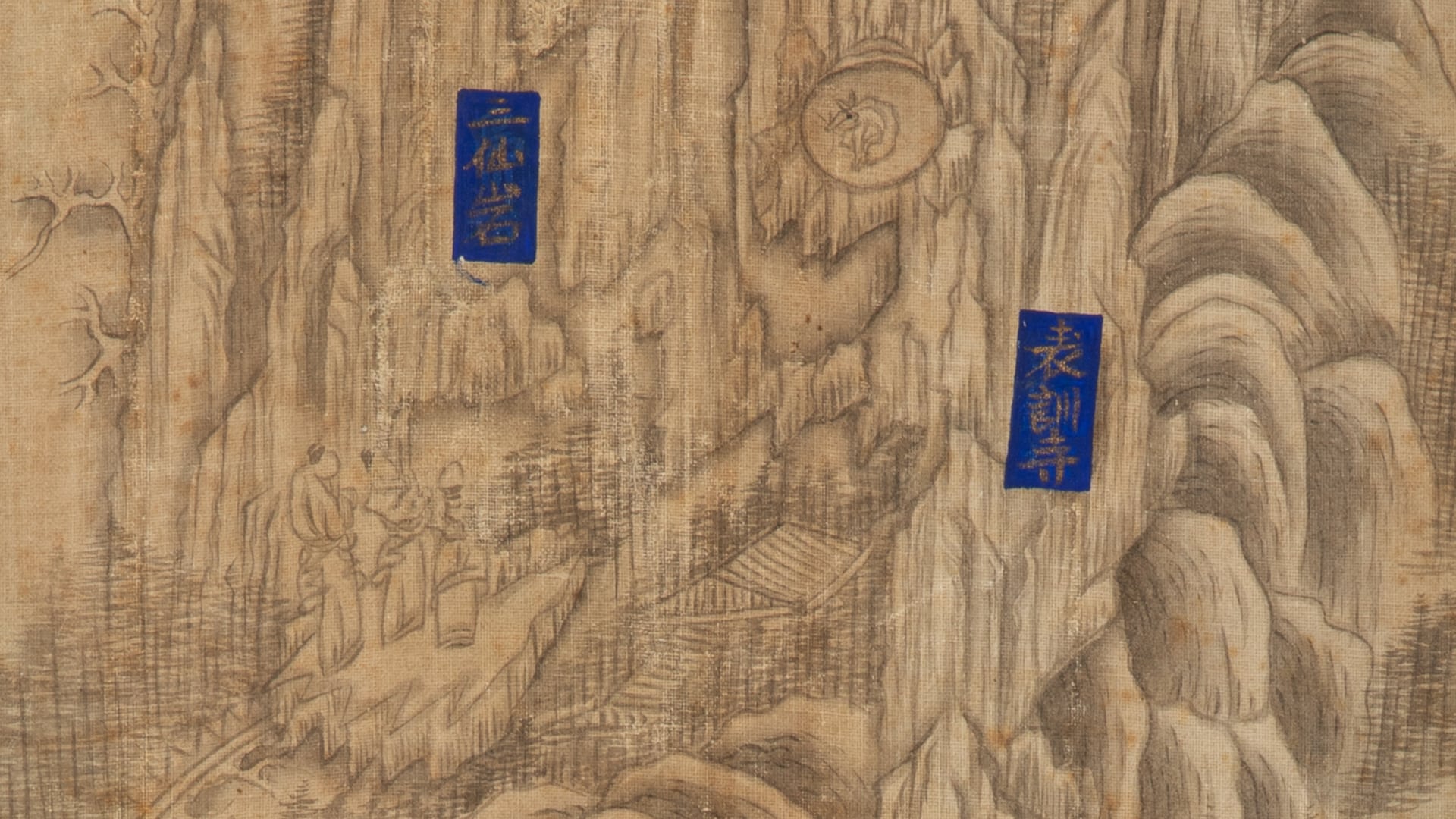
Introduction
The Diamond Mountains
The Korean peninsula is characterized by its mountainous landscape, with over 70 percent of its terrain covered by hills and peaks. Among these natural wonders, the Diamond Mountains, also known as Mount Geumgang (금강산 金剛山), holds an iconic position in Korean history and art. Located in present-day Gangwon Province in North Korea, this mountain range features distinctive natural landscapes, popular Buddhist temples, and famous historical sites. Having captivated artists for centuries, Mount Geumgang stands as one of the most depicted subjects in Korean art and remains a source of national pride throughout history.
Korean Landscape Painting
The 18th century marked a ground-breaking development in Korean landscape painting. In contrast to earlier works that primarily depicted well-known Chinese scenes or imaginative landscapes, the new true-view landscape painting genre (jingyeong sansuhwa 진경산수화 眞景山水畵) captured the actual topography of Korea’s native land and conveyed the historical and psychological significance associated with the scenery. The concept and style of true-view landscape painting reached its full potential in the visual representation of Mount Geumgang.
Paintings of Mount Geumgang
This online exhibition presents eight ink paintings of Mount Geumgang from the Harn’s Korean art collection. The cropped circular composition, bird’s eye perspective, sharp vertical brush strokes for bony peaks, and short horizontal ones for masses of foliage reflect a direct connection with the meticulous techniques and realistic style pioneered by the eminent Korean painter Jeong Seon 정선 鄭敾 (1676-1759). Inscribing the names of the landmarks on blue slips attached to specific sites evidence the influence of Korean cartography tradition on these paintings.
Diverging from Jeong Seon’s numerous paintings of Mount Geumgang, the selection and arrangement of various sites in these paintings do not adhere to their actual geographic locations (see map below). Temples and famous sites from Outer Geumgang Mountain (Oegeumgang, 외금강 外金剛), Inner Geumgang Mountain (Naegeumgang내금강 内金剛), and Costal Geumgang Mountain (Haegeumgang 해금강 海金剛) are sometimes juxtaposed in a single composition. A few sites, such as Jangjeonman and Bibong-pok, which are not in Mount Geumgang are also included, indicating that the painter did not physically visit the actual sites. The symbolic representation of natural scenery in these paintings further suggests that the painter drew inspiration from visual and literary references, which historically personified popular peaks and waterfalls with the forms of Buddhist deities or mythical creature implied by their names. In contrast to other landscape paintings of Mount Geumgang, typically devoid of human activities, the Harn’s paintings show groups of gentlemen roaming among the mountains, engaging in conversations, or immersing themselves in the natural splendor.

Paintings of Diamond Mountains (Mount Geumgang)
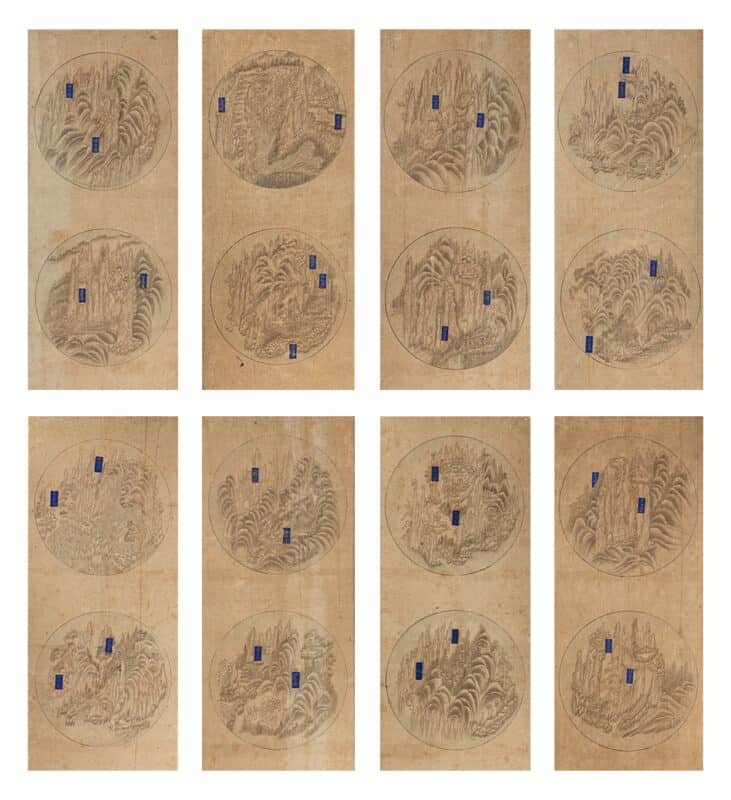
Originally mounted as an eight-panel folding screen, these paintings were created for home display, offering viewers a special lens through which they could appreciate the natural landscapes and connect with legendary landmarks on a spiritual journey without leaving their homes.
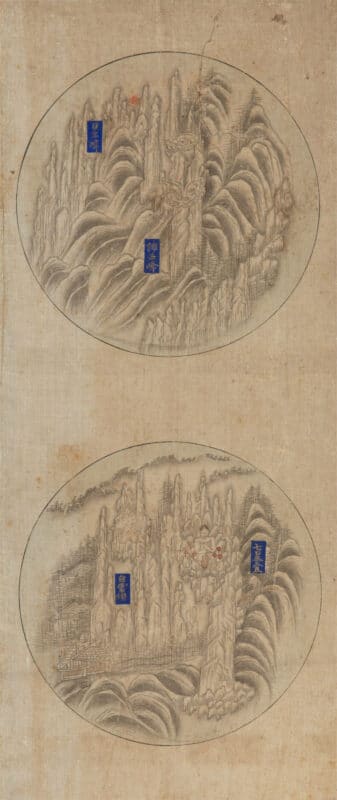
Panel 1
From right to left and top to bottom, the featured sites in this painting are Ilchulbong 일출봉 日出峰 (Sunrise Peak), Singeobong신거봉 神去峰 (Peak of Immortals Departure), Baegundae 백운대 白雲坮 (Peak of White Cloud), and Chilseongdae 칠성대 七星臺 (Peak of Seven Stars).
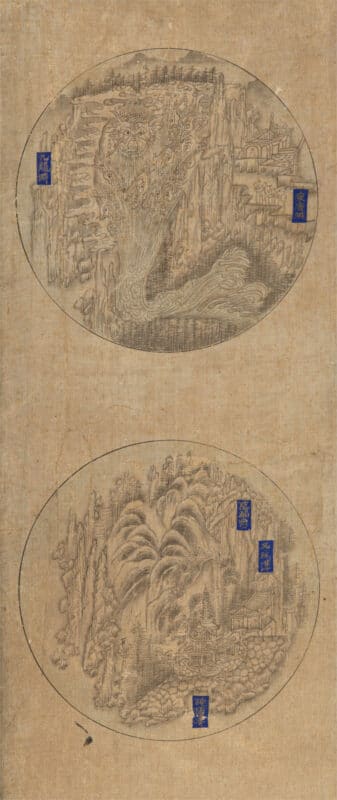
Panel 2
From right to left and top to bottom, the featured sites in this painting are Guryongyeon 구룡연 九龍淵 (Pool of Nine Dragons), Junghyangseong 중향성 衆香城 (Peak of Various Fragrances), Eunseondae은선대 隱仙台 (Peak of Reclusive Immortals), Munsudam 문수담 文殊潭 (Pond of Manjushri), and Singyesa 신계사 神溪寺 (Temple of Divine Creek).
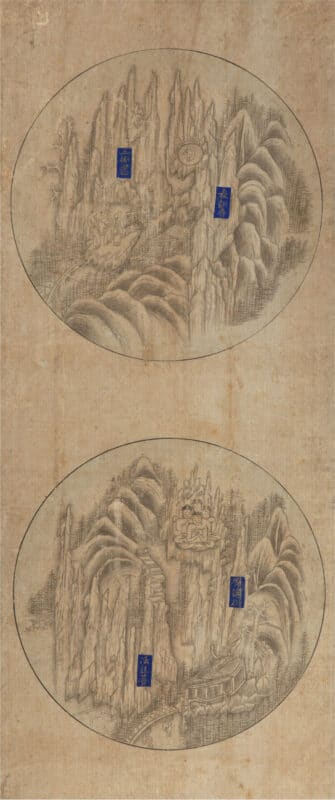
Panel 3
From right to left and top to bottom, the featured sites in this painting are Samseonam 삼선암 三仙岩 (Rock of Three Immortals), Pyohunsa 표훈사 表訓寺 (Temple of Buddha’s Sermon), Beopgiam 법기암 法起萻 (Hermitage of Beopgi Bodhisattva), and Mahayeon 마하연 摩珂衍 (Temple of Great Wisdom).
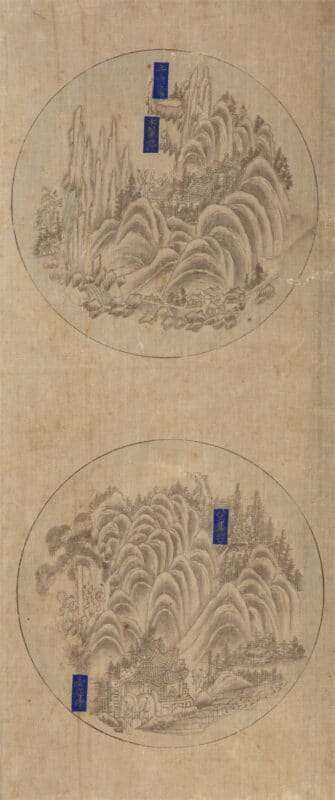
Panel 4
From right to left and top to bottom, the featured sites in this painting are Suryeompok 수렴폭 水簾瀑 (Curtain Waterfall), Ongnyeobong 옥녀봉 玉女峯 (Peak of Jade Lady), Jangansa 장안사 長安寺 (Temple of Eternal Peace), and Manggundae 망군대 望軍台 (Lookout of Watching Military Troops).
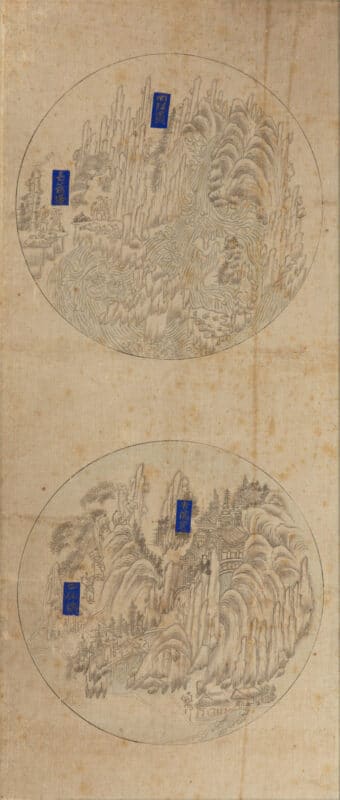
Panel 5
From right to left and top to bottom, the featured sites in this painting are Jangjeonman 장전만 長箭湾 (Bay of Long Arrow), Danballyeong단발령 斷發嶺 (Cutting Hair Ridge), Saseongyo 사선교 四仙橋 (Bridge of Four Immortals), and Bodeokgul 보덕굴 普德窟 (Cave of Virtues).
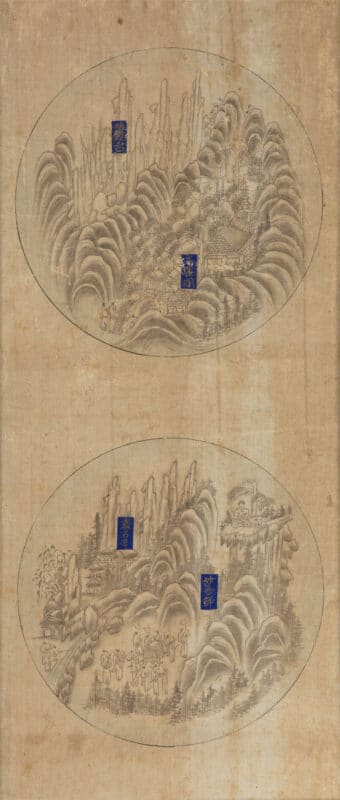
Panel 6
From right to left and top to bottom, the featured sites in this painting are Myeonggyeondae 명경대 明鏡台 (Rock of Clear Mirror), Manpokdong 만폭동 萬瀑洞 (Valley of Ten Thousand Waterfalls), Chongseokjeong 총석정 叢石亭 (Pavilion of Many Rocks), and Myogilsang 묘길상 妙吉祥 (Marvelous Rock-carved Buddha).

Panel 7
From right to left and top to bottom, the featured sites in this painting are Jipseonbong 집선봉 集仙峰 (Peak of Immortal Gatherings), Jeongyangsa 정양사 正陽寺 (Temple Facing the Sun), Samilpo 삼일포 三日浦 (Three Days Lake), and Hyeonjongam 현종암 懸鍾岩 (Rock of Hanging Bell).
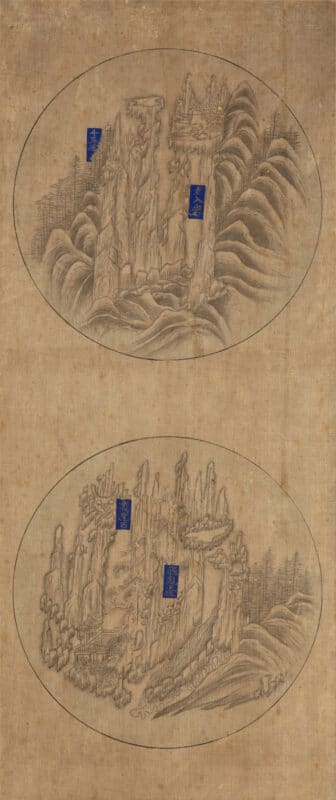
Panel 8
From right to left and top to bottom, the featured sites in this painting are Sibwangbong 십왕봉 十王峰 (Peak of Ten Kings), Noibam 노입암 老入岩 (Rock of Elderly Man), Binbyeonseok 빈변석 濱邊石 (Rock by the Water), and Bibongpok 비봉폭 飛鳳瀑 (Flying Phoenix Waterfall).
To view the Harn’s entire Korean art collection visit this eMuseum link.
Acknowledgements:
This exhibition is generously supported by the National Museum of Korea.
The text of this exhibition is translated by art historian Dr. Hayoon Jung.
The National Museum of Korea Overseas Korean Galleries Support Program intern Madeline Menet (UF History 2024) contributed to the research for this exhibition.
